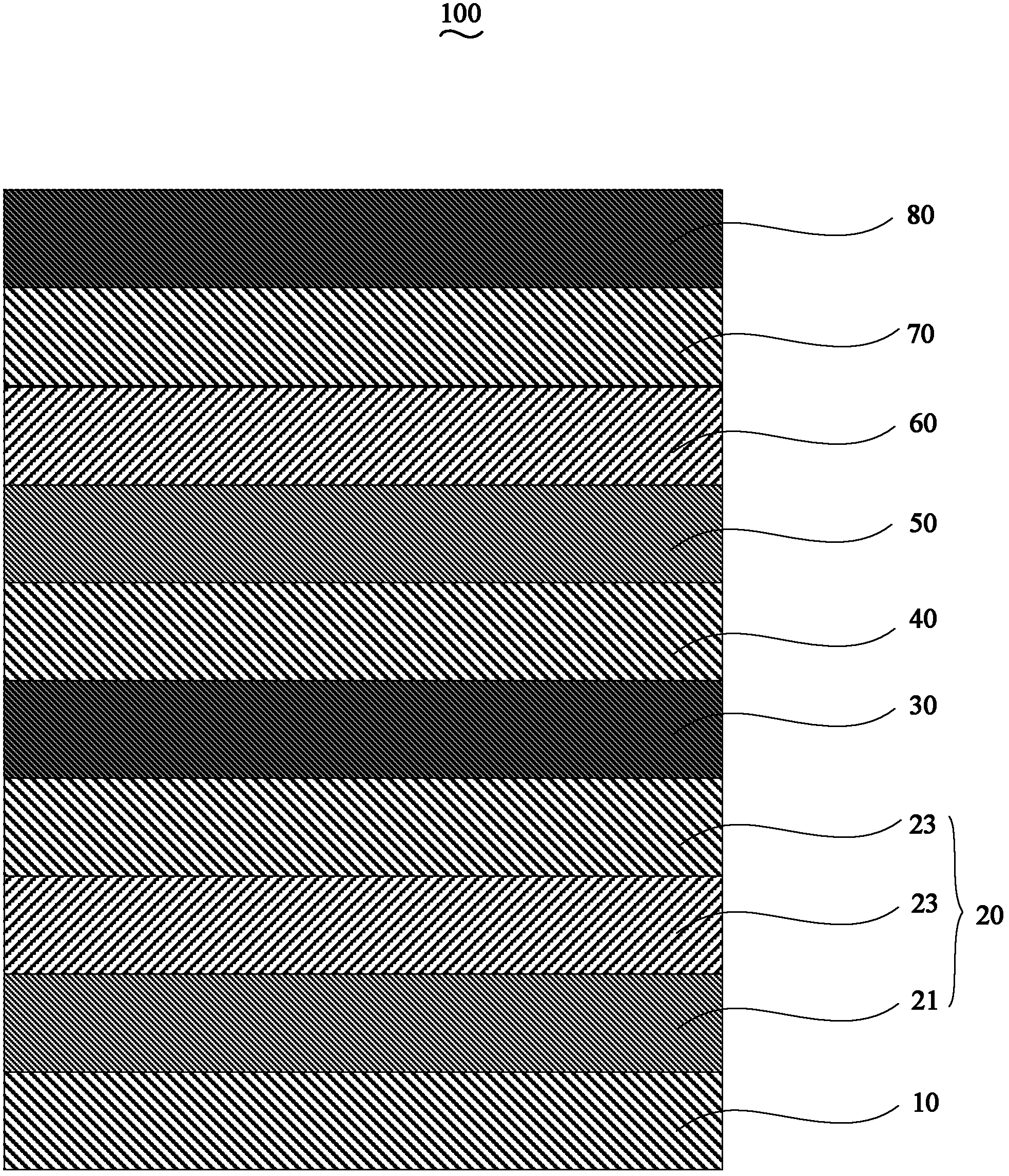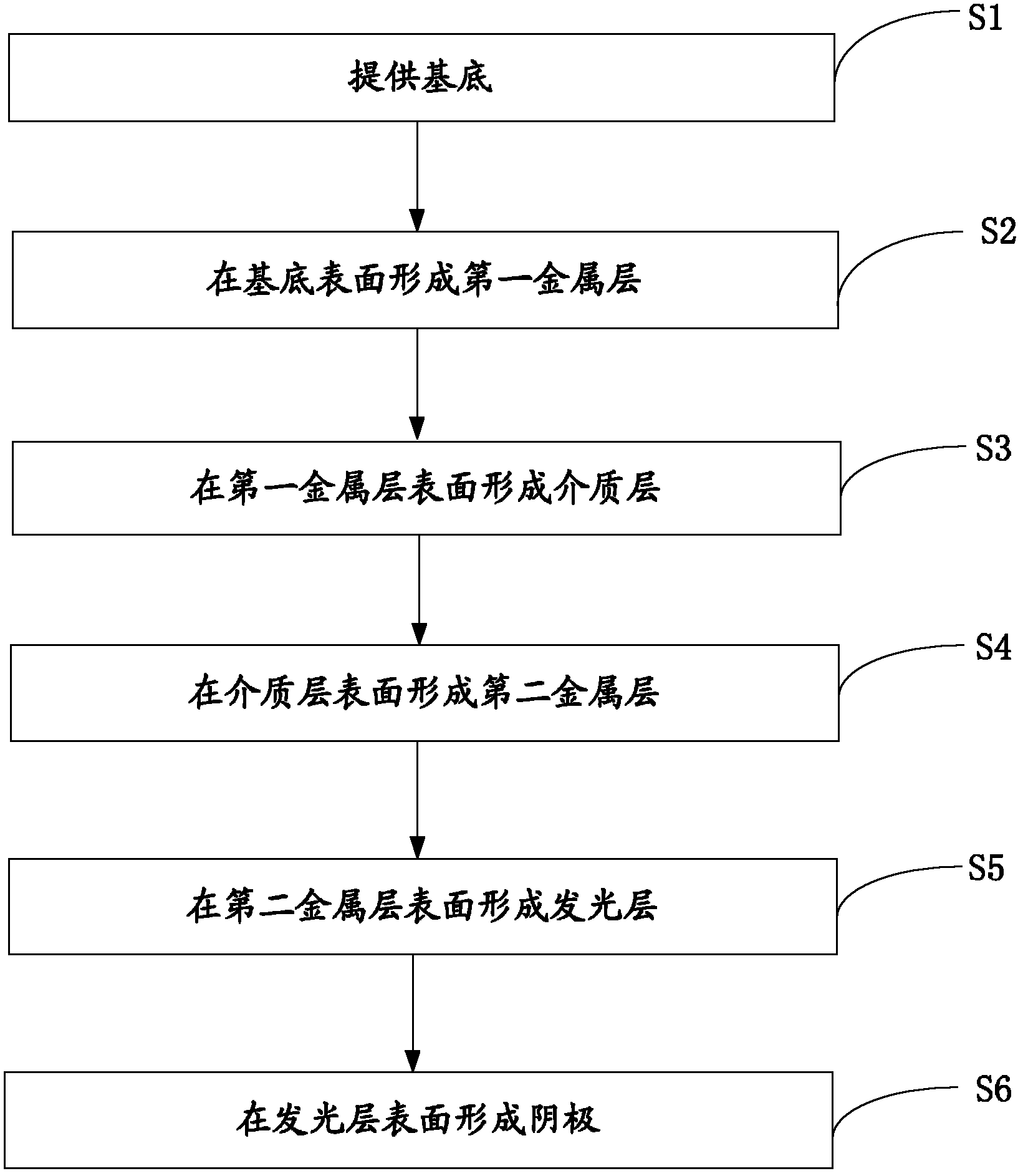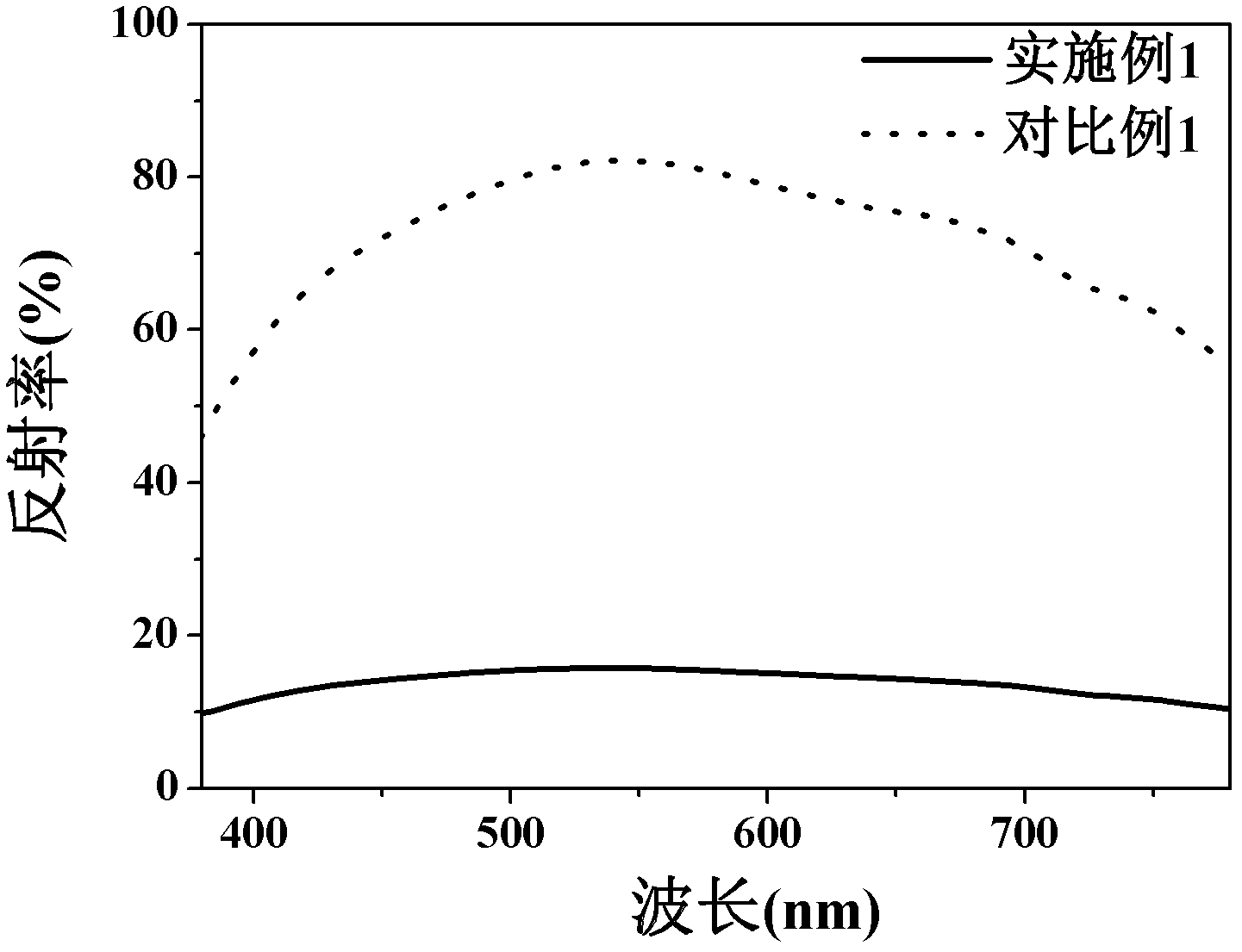Organic electroluminescent device and production method thereof
An electroluminescence device and electroluminescence technology, which are applied in the fields of electric solid state devices, chemical instruments and methods, semiconductor/solid state device manufacturing, etc., and can solve the problems of low contrast and inability to see the content clearly.
- Summary
- Abstract
- Description
- Claims
- Application Information
AI Technical Summary
Problems solved by technology
Method used
Image
Examples
preparation example Construction
[0032] see figure 2 , the preparation method of the organic electroluminescent device of an embodiment, comprises the following steps:
[0033] Step S1 , providing a substrate 10 .
[0034] In this embodiment, the substrate is silicon wafer, glass or polymer film material. Substrates are cleaned prior to use. First, put the substrate in deionized water containing detergent for ultrasonic cleaning. After cleaning, it is treated with isopropanol and acetone in ultrasonic for 20 minutes, and then dried with nitrogen to obtain a clean substrate.
[0035] Step S2, forming a first metal layer 21 on the substrate surface 10, the material of the first metal layer 21 is aluminum (Al), silver (Ag), gold (Au), aluminum-silver alloy (Al-Ag) or magnesium-silver alloy ( Mg-Ag). The thickness of the first metal layer 21 is 80nm˜150nm.
[0036] In this embodiment, the first metal layer 21 is formed by evaporation in a vacuum coating system.
[0037]Step S3 , forming a dielectric layer ...
Embodiment 1
[0050] The structure of the organic electroluminescent device of this embodiment 1: substrate / Ag / IZO / Ag / m-MTDATA / NPB / FIrPic:CBP / Alq 3 / LiF / Ag.
[0051] The preparation process of the organic electroluminescent device of this embodiment 1 is as follows:
[0052] Place the glass substrate in deionized water containing detergent for ultrasonic cleaning. After cleaning, treat it with isopropanol and acetone in ultrasonic for 20 minutes, and then dry it with nitrogen. In the vacuum evaporation system, metal Ag with a thickness of 100 nm is deposited on the surface of the substrate as the first metal layer, and then transferred to the magnetron sputtering system to prepare indium-doped zinc oxide with a thickness of 80 nm on the first metal layer (IZO) thin film is used as a dielectric layer, and then transferred to a thermal evaporation system, and a metal Ag with a thickness of 8 nm is evaporated on the dielectric layer as a second metal layer to prepare an anode. The anode was ...
Embodiment 2
[0055] The structure of the organic electroluminescent device in Example 2: substrate / Al / ITO / Al / m-MTDATA / NPB / FIrPic:CBP / Alq 3 / LiF / Al / Ag.
[0056] In the anode structure prepared in Example 2, the first metal layer is an Al layer with a thickness of 80nm, the dielectric layer is an indium-doped tin oxide (ITO) film with a thickness of 60nm, and the second metal layer is an Al layer with a thickness of 6nm . Referring to Example 1, after the anode is treated, continue to vapor-deposit a hole injection layer, a hole transport layer, a light-emitting layer, an electron transport layer, and an electron injection layer on the surface in sequence, and the thicknesses are 30nm, 30nm, 15nm, and 60nm respectively. , 1nm, and the subsequent cathode is a double-layer structure composed of Al(1nm) / Ag(20nm).
PUM
| Property | Measurement | Unit |
|---|---|---|
| Thickness | aaaaa | aaaaa |
| Thickness | aaaaa | aaaaa |
| Thickness | aaaaa | aaaaa |
Abstract
Description
Claims
Application Information
 Login to View More
Login to View More - R&D Engineer
- R&D Manager
- IP Professional
- Industry Leading Data Capabilities
- Powerful AI technology
- Patent DNA Extraction
Browse by: Latest US Patents, China's latest patents, Technical Efficacy Thesaurus, Application Domain, Technology Topic, Popular Technical Reports.
© 2024 PatSnap. All rights reserved.Legal|Privacy policy|Modern Slavery Act Transparency Statement|Sitemap|About US| Contact US: help@patsnap.com










